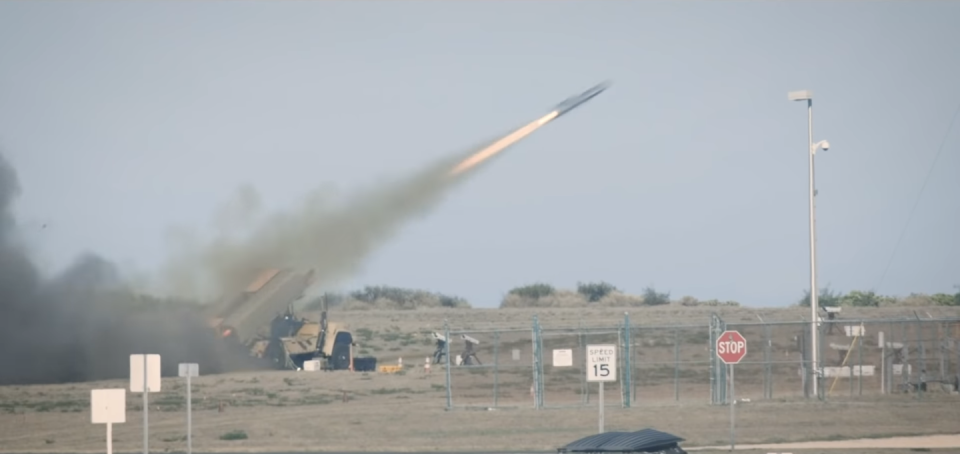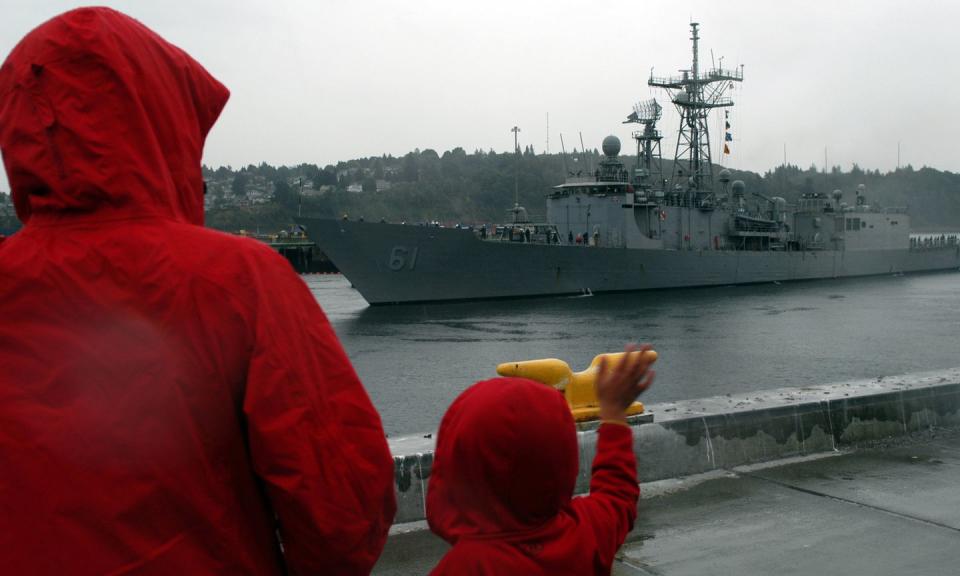Watch the U.S. Navy Literally Snap a Warship in Half
The U.S. Navy recently conducted a SINKEX as part of Large Scale Exercise 21.
The SINKEX saw Navy aircraft and submarines, and a Marine Corps drone missile launcher, score hits on a decommissioned guided-missile frigate.
The missiles scored major damage, but it was an Mk. 48 torpedo that literally broke the ship in two.
A new video shows the firepower the U.S. Navy and Marines brought to sink a warship during its recent Large Scale Exercise 2021 (LSE 21). The two services threw the kitchen sink at the retired USS Ingraham, blasting it from all directions, but it was the shot from underwater that literally broke the ship’s back.
LSE 21 is a globe-spanning naval exercise involving 25,000 sailors and Marines and more than 25 ships. The exercise was designed to test a new naval operating concept, known as Distributed Maritime Operations, enabling fleet commanders to control carrier and amphibious groups, as well as individual ships, across vast areas. Under DMO these individual assets might operate separately to cover more ocean but come together to mass overwhelming firepower against an enemy target.
LSE 21 included a SINKEX, or sinking exercise. A SINKEX basically involves towing a decommissioned ship out to sea and then plastering it with firepower. This gives the Navy the ability to test weapons in their entirety, from the moment the rocket motors or turbine engines spool up to the moment the high explosive warhead tears into the target ship. A typical SINKEX will see several types of weapons used at once against a single ship.
➡ You love badass military tech. So do we. Let’s nerd out over it together.
This latest SINKEX is documented in a new video released by the U.S. Navy, shown above. The video shows a number of air, surface, subsurface, and land assets preparing for the shoot-off. This includes the aircraft carrier USS Carl Vinson and her embarked F/A-18E/F Super Hornet fighters, older land-based Hornet fighters, a P-8 Poseidon maritime patrol aircraft, the nuclear-powered attack submarine USS Chicago, and a land-based anti-ship missile carrier.
The end of the Cold War left the U.S. Navy the world’s preeminent, undisputed naval power. The Navy was so dominant it focused on other missions, including supporting land wars and building all-purpose strike fighters at the expense of the ability to sink other ships. The rise of China’s People’s Liberation Army Navy and the slow rebuilding of the Russian Navy, however, caused the Navy to recently start building back anti-ship capabilities.

The SINKEX shows the progress the service has made in getting back to the ship-striking business. The video shows Joint Standoff Weapon (JSOW) guided glide munitions wheeled across the Carl Vinson’s flight deck before being loaded onto F/A-18E/F Super Hornet strike fighters. At an unidentified land base, a pair of Marine Corps F/A-18C Hornets are armed with AGM-84 Harpoon anti-ship missiles.
A naval aviation maintainer takes the protective nose cap off a Harpoon anti-ship missile mounted on the wing of a P-8 Poseidon, and sailors aboard a nuclear attack submarine load a green canister marked UGM-84D into a torpedo tube. UGM-84D is the submarine-launched version of the Harpoon missile, a system withdrawn in the 1990s but recently brought back to the sub fleet.

Last but not least, a U.S. Navy transport hovercraft hauls itself up on a Hawaiian beach and disgorges a brand new weapon system, the Navy Marine Expeditionary Ship Interdiction System (NMESIS). NMESIS is a remote-controlled truck armed with two Norwegian-designed Naval Strike Missiles (NSM). NSM is the U.S. Navy and Marines’ latest anti-ship missile, equipping both littoral combat ships and the NMESIS system.
Once the show starts it's clear Ingraham is doomed. A montage of launch scenes, including a rare submarine periscope view of a Harpoon missile lighting off, shows the plethora of ordnance winging its way to the hapless frigate. One after another they impact the ship: most hit the ship dead center, sending shrapnel flying into the surrounding water. Several impact moments from one another, indicating a coordinate attack. One missile smashes into the fantail, where it destroys the helicopter flight deck and would have crippled the ship’s gas turbine engines.

The coup de grace, however, is the moment the 1,600-ton ship is lifted into the air, her keel snapped in half like a twig. That bears all the hallmarks of a Mk.48 Advanced Capability (ADCAP) torpedo launched from USS Chicago. Air and ship-launched missiles both do damage through the onboard high explosive warhead. Submarine torpedoes, however, use their high explosive warheads to create an even more powerful underwater shockwave. Although the Mk. 48’s 650-pound high explosive warhead is just 30 percent more powerful than a Harpoon missile’s, it does an outsized amount of damage.
As for the keel snapping, the website Globalsecurity.org describes what happened to the poor Ingraham:
“When a warhead is detonated at close range beneath a ship, the steam void initially lifts the ship upwards from the middle. This tends to weaken the ship's keel. After the steam void has reached its maximum volume the surrounding water pressure will collapse it. The ship then falls into the void, still supported on its ends. The keel will then break under the ship's own weight.”
The last we see of Ingraham she is slipping under the waves, bow pointed defiantly upwards as she sinks to her final resting place.
🎥 Now Watch This:
You Might Also Like

